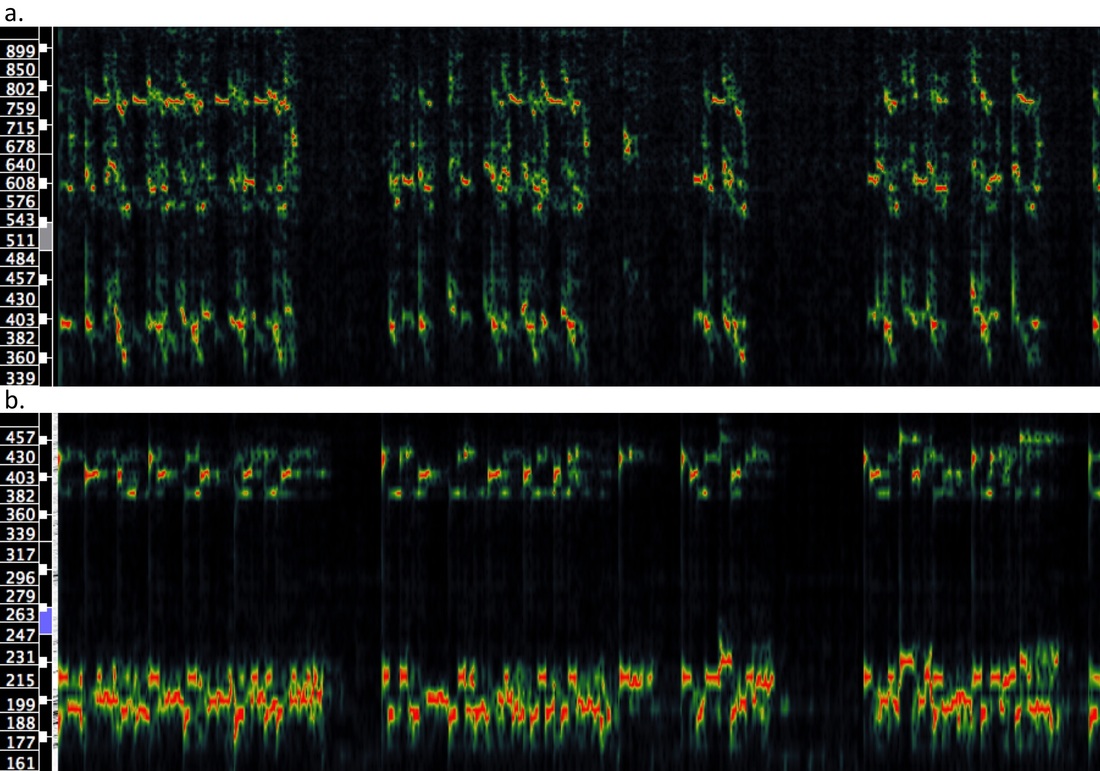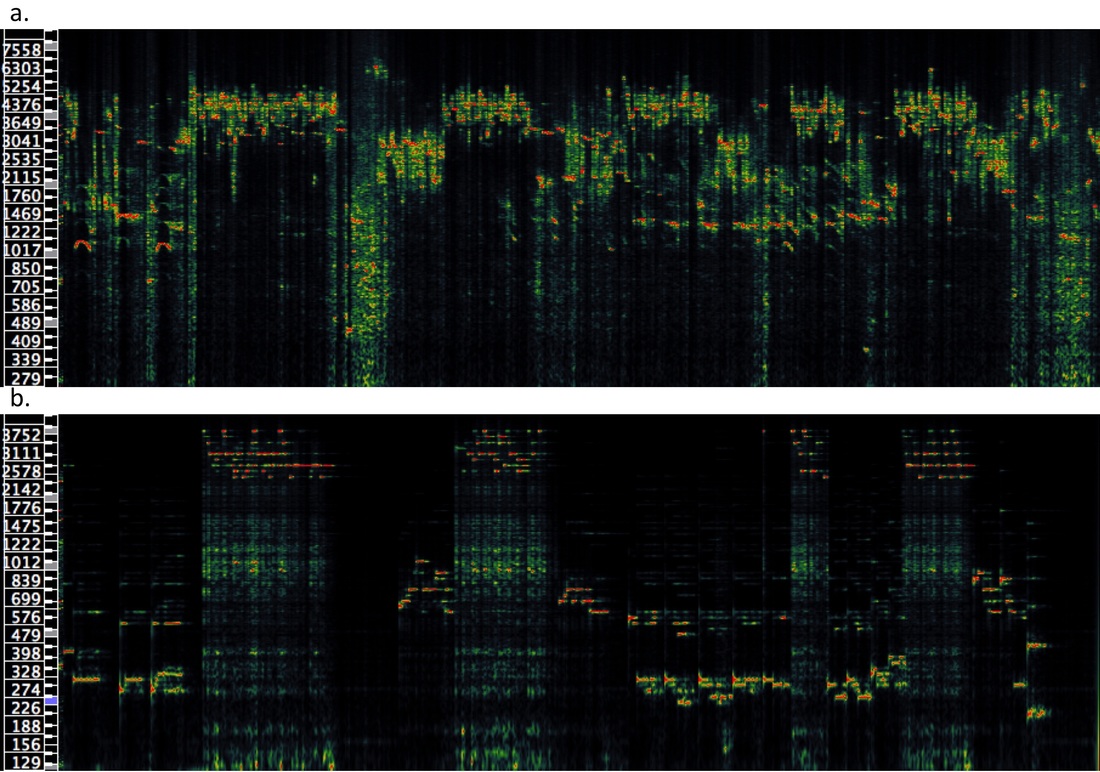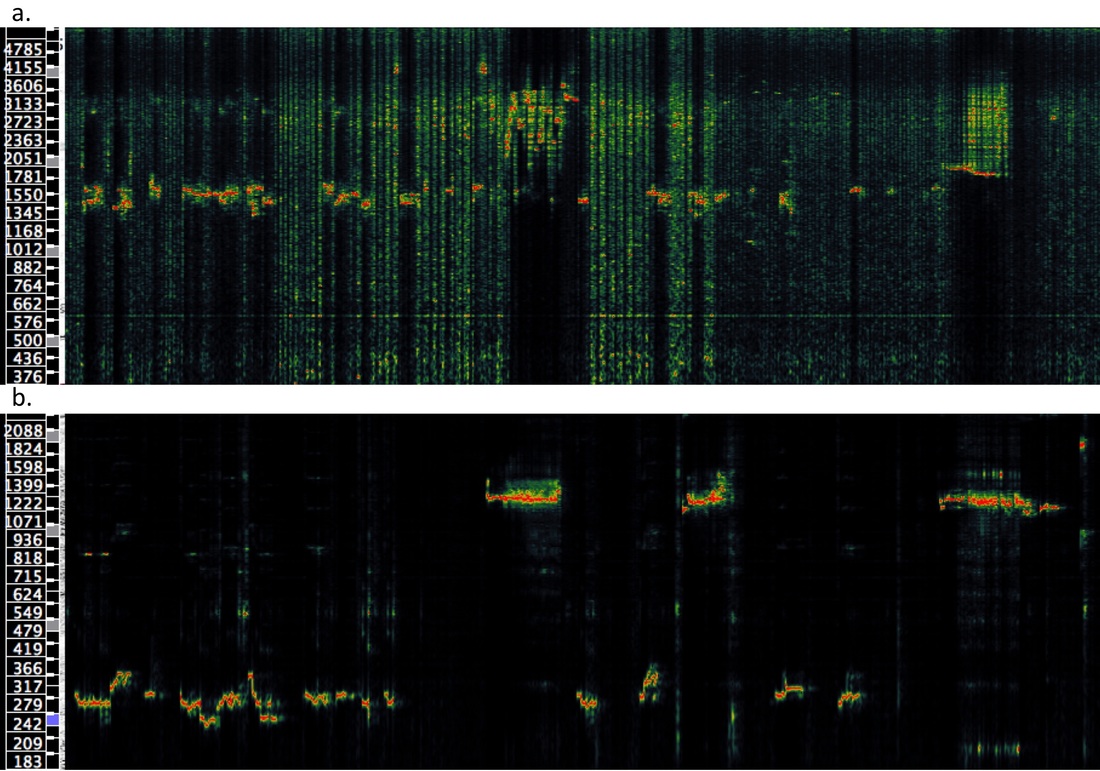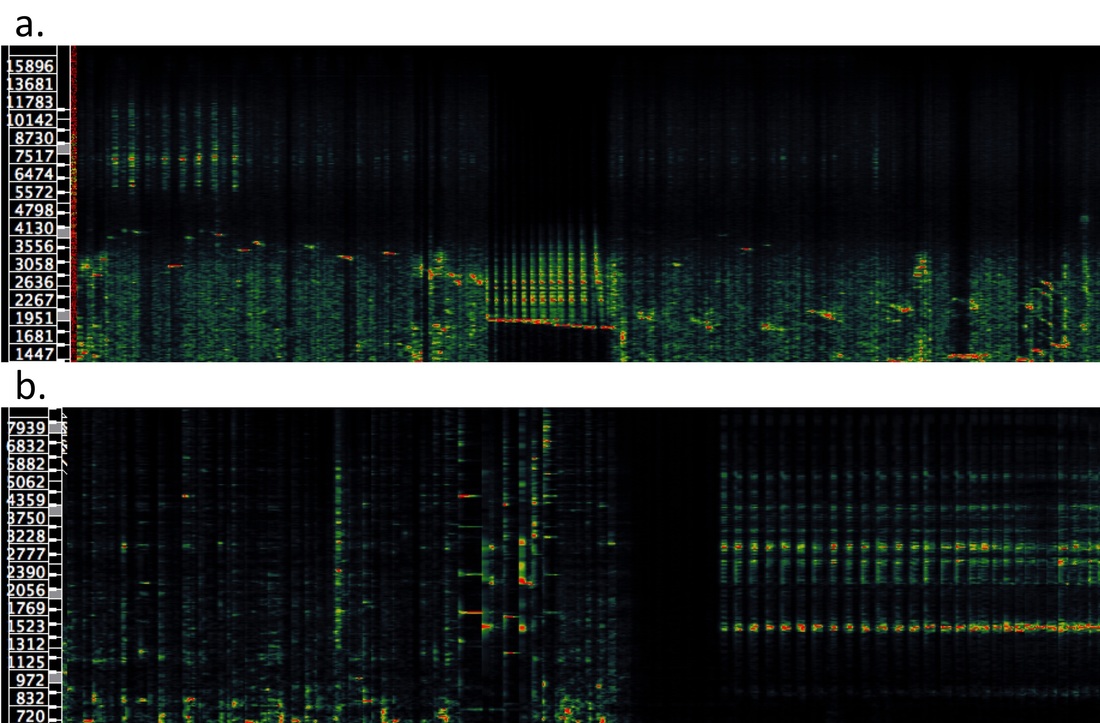| The figures below explore the effectiveness of these objectives through the comparison spectrograms of the source field recordings and the performances of a number of musicians. The spectrograms depict comparable frequency ranges, although the performer spectrograms are uniformly an octave lower than those of the field recording. The titles of the recordings are those given by the original recordist Philip Kenworthy. The Figure to the right compares the field recording Bullfrogs and Rainstorm with a pianist’s performance. The performer’s relationship to Lyrebird is the most “score-like”, in that the pitch, rhythmic and dynamic contours of the bullfrog croaks from the field recording are adhered to with a great deal of precision. | Bullfrogs and Rainstorm: comparison between (a) field recording 339-899Hz and (b) piano performance 161-457Hz. |
| Kookaburra Sunrise: comparison between (a) field recording 279-7558Hz and (b) piano performance 129-3752Hz. | The task is perhaps simplified because the pitch range of the croaks is limited to about 3 semitones, however the spectrogram indicates that this method of synchronisation of the recording and the performance is effective in this instance. In a case where a more complex sound environment comprising a range of birdsongs is used, such as the figure on the right, the task is considerably more complex. Birdsongs are often too high pitched and rapid to be emulated entirely accurately. Lyrebird aims to provide information at a human scale showing the contour of extremely rapid birdcalls rather than precise detail. Here the same pianist aims to portray three bands of activity in different ranges and is successful until the bands have simultaneous activity (about half-way through the figure), at which point activity in the highest band is ignored. |
| In a complex environment such as the recording Whistlers and Crickets (Figure to the right) there is too much data for the performer to emulate the complete environment. Again the performer, this time on bass clarinet chooses specific features to emulate. A potential solution to the emulation of complex environments is the use of networked players displaying activity in different bands for a number of performers. Lyrebird does not represent the sonic events on a grid to indicate frequency, and it is evident that the performer here “overshoots” the high frequency events, performing them about an octave too high in relation to the lower pitched layers. | Whistlers and Crickets: comparison between (a) field recording 376-4785Hz and (b) bass clarinet performance 183-2088Hz. |
| Whistlers and Crickets: comparison between (a) field 1447-15896Hz recording and (b) percussion performance 720-7939Hz. | In the Figure to the left, the performer’s aim was to interact with the recording through both emulation and improvisation. The field recording spectrogram shows the gradual fading of repetitive cricket sounds, followed by a prominent birdcall. The percussionist emulates only the birdcall and then mimics the cricket sounds once they have ceased. The passage suggests that Lyrebird can provide and effective representation of the sonic environment that allows the performer to interact by taking over features from the recording. |
Lyrebird allows for interaction with pre-recorded non-anthropogenic sound environments. The degree to which an interaction is meaningful is self-evidently dependent on the performer(s) abilities. Examples of this work can be heard at (https://lindsayvickery.bandcamp.com/album/works-for-instruments-and-field-recordings). However, unlike many musical experiences the potential for precise synchronisation of a performer with seemingly indeterminate sonic events arguably has an intrinsically interesting quality. The evaluation of the accuracy of performer emulation is something of an end in itself, and this includes both the degree of acoustic reproduction of the sounds (as demonstrated in the figures above) and the performer’s ability to “enter into” the soundworld of the recording through improvisation.





 RSS Feed
RSS Feed
